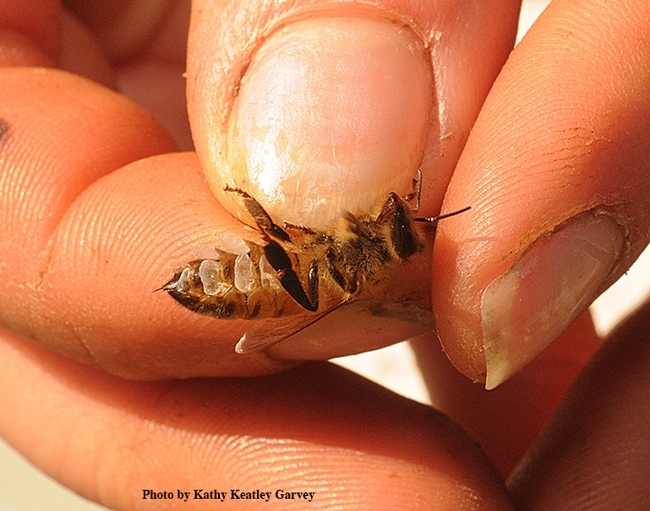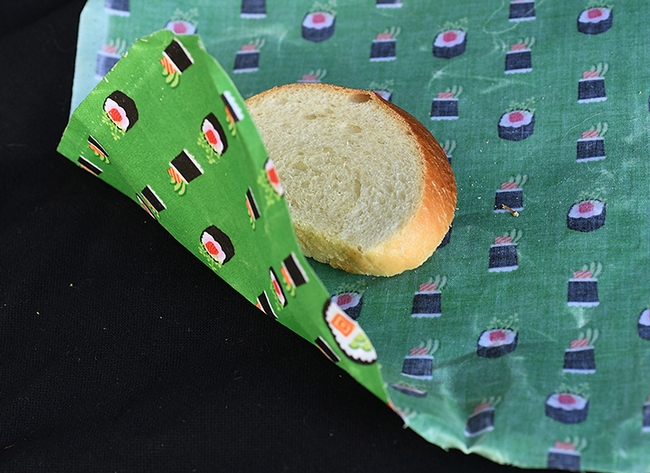
The Dec. 7th class is sold out. But keep in touch: another class is scheduled June 14, 2020.
In the December class, set from 8:45 a.m. to 5 p.m., in the Harry H. Laidlaw Jr. Honey Bee Research Center on Bee Biology Road, participants will learn how wax is made, how to collect it, how to process it, and how to make their own wax products such as candles and wax reusable food wraps.
It will be taught by Extension apiculturist Elina Niño of the UC Davis Department of Entomology and Nematology faculty and director of the California Master Beekeeper Program, and lab assistants Robin Lowery and Nissa Svetlana Coit.
Lowery and Coit "will be leading us through the practical part of the wax working day,” announced Wendy Mather, program manager of the California Master Beekeepers Program. “This class is perfect for the hobby and sideline beekeeper and for other individuals interested in learning the basics of working with wax.”
The instructors said the class "will be a creative and science-based class learning the what, why and how of beeswax, making candles, lotion bars, beeswax food wraps, lip balm and dipped flowers to take home.” The products are wonderful for holiday gifting, they said.
As a bonus, the instructors will provide an overview of the honey extraction process, and learn bottling, labeling rules and regulations, and how to perform a honey tasting.
Class participants will have an opportunity to make candles with wicks, use molds, pour wax into jars or cans, dip flowers in wax, and make hand lotion, chapsticks, and wax reusable food wraps.
The two lab assistants are daily exposed to bees, beekeeping, and all things related to honey bee husbandry, said Mather. Lowery, a two-year beekeeper, assists with managing the apiary and the research at the E. L. Nino lab. "She has been making gifts for special occasions for over 15 years and looks forward to modeling how to dip and roll candles, make sealing wax, lotion and lip balm, and wax food wrappers," Mather said.
Beeswax is a natural wax produced by worker honey bees, which have eight wax-producing glands in the abdominal segments. Hive workers collect the wax and use it to form cells for honey storage and for larval and pupal protection. When beekeepers extract the honey, they remove the wax caps from the honeycomb frame with an uncapping knife or machine.
Beewax has long been used for making candles (they are cleaner, brighter and burn longer than other candles) and for cosmetics and encaustic paintings. Wax food wrappers, used to wrap sandwiches and cover bowls of food, are environmentally friendly, sustainable, economical, and a reusable alternative to plastic bags. Statistics show that globally, people use an estimated one trillion single-use bags every year, or nearly 2 million a minute. While beeswax is a natural wax, plastic bags and plastic bags contain chemicals, and there is concern that chemicals can leach into the food.
The $235 registration fee covers a continental breakfast, snacks, lunch and refreshments, and materials. Participants make and take two of each item. Mather may be reached at wmather@ucdavis.edu for more information.
Attached Images:

The wax-working glands of a honey bee. (Photo by Kathy Keatley Garvey)

Reusable food wrappers--crafted with bees wax--are considered a better alternative than plastic wrap. This wrapper is the work of Teresa Hickman of Vacaville (handmadebyTeresa, Facebook page) who offers these at farmers' markets, festival and other venues in the area. (Photo by Kathy Keatley Garvey)